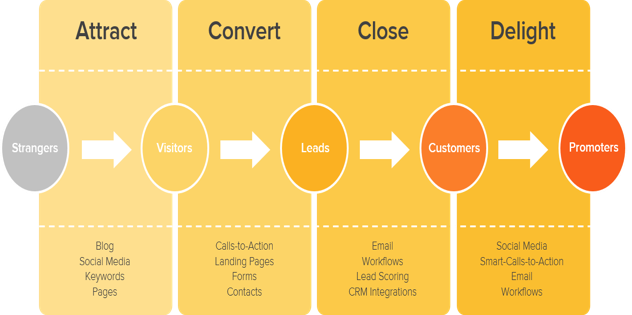Does Inbound Marketing Really Work?
Does Inbound Marketing Really Work?
Get weekly
HubSpot Updates
Instead of the traditional, interruptive marketing methods that see a marketer actively hunting for customers, there is an alternative and it’s called Inbound Marketing. Rather than you looking for new prospects, they are looking for you, or rather looking for a solution to a problem that you can solve.
Getting your inbound marketing campaigns right means that you become more of a welcome guest to your prospects rather than an annoying interruption. It means that you get a regular supply of leads contacting your company, ready to listen to what you have to tell them.
This leads to better quality leads that are more likely to convert and less likely to be price sensitive.
So, in theory, that all sounds great, but let’s look at some stats to support this method. A report from Inbound Marketing pioneers, Hubspot, details some great information about how inbound is actually making an impact on its practitioners.
Before we start, as a reminder of what inbound marketing is, here’s a brief reminder of the 4 different stages of inbound:

Attract - Getting people to your website
Blogging
- Most people subscribe to 5-10 blogs
- 57% of marketers have acquired customers through blogging
- Companies that blog 15+ times per month get 5x more traffic than companies that don’t blog
- Companies that increased their blogging from 3-5 times per month to 6-8 times per month almost double their leads
- An average company will see a 45% growth in traffic when increasing their blog articles from 11-20 to 21-50
Social Media
- Social media has a 100% higher lead to close rate than outbound marketing
- 42% of marketers say that Facebook is critical or important to their business
- An average company saw a 185% increase in traffic after reaching 1000 Facebook likes
- 84% of b2b marketers use some form of social media
- Companies with 51-100 Twitter followers generate 106% more traffic than those with less than 25
- More than half of Twitter users follow a brand
SEO
- 44% of online shoppers begin by using a search engine
- 60% of all organic clicks go to the top three organic search results
- 75% of users never scroll past the first page of search results
- Companies that blog have 97% more inbound links
Convert - Converting the visitors into leads
Landing Pages
- Companies with 30 or more landing pages generate 7x more leads than those with fewer than 10
- 68% of B2B companies use landing pages to gather leads for future conversations
- Businesses with over 40 landing pages get 12x more leads than those with only 1-5
Close - Converting the leads into customers
- Lead nurturing email sequences get 4 to 10 times the response rates of standalone email blasts
- Relevant emails drive 18x more revenue than broadcasts emails
- Companies that excel at lead nurturing have 9% more sales reps hitting their targets
Marketing Automation
- Companies have seen up to 50% more sales ready leads being generated at 33% of the costs
- Businesses that use marketing automation to nurture leads see a 45% increase in qualified leads
- Nurtured leads make 47% larger purchases than non-nurtured leads
- Automated lead management leads to a 10% increase in sales revenue within 6-9 months
As you can see, there are many tangible benefits of converting to an inbound strategy. The main one being that when you get the process right, you get a steady, reliable and predictable stream of high quality prospects.
Ask most sales people what their biggest challenge is and they’ll say that it’s getting too few qualified leads. Inbound marketing helps to overcome this challenge and allows your sales team to concentrate on what they should be doing - talking to qualified prospects.
If you'd like to find out how to put together an inbound marketing campaign, download a free guide by clicking the button below:
Our content includes affiliate links. This means that we may receive a commission if you make a purchase through one of the links on our website. This will be at no cost to you and helps to fund the content creation work on our website.